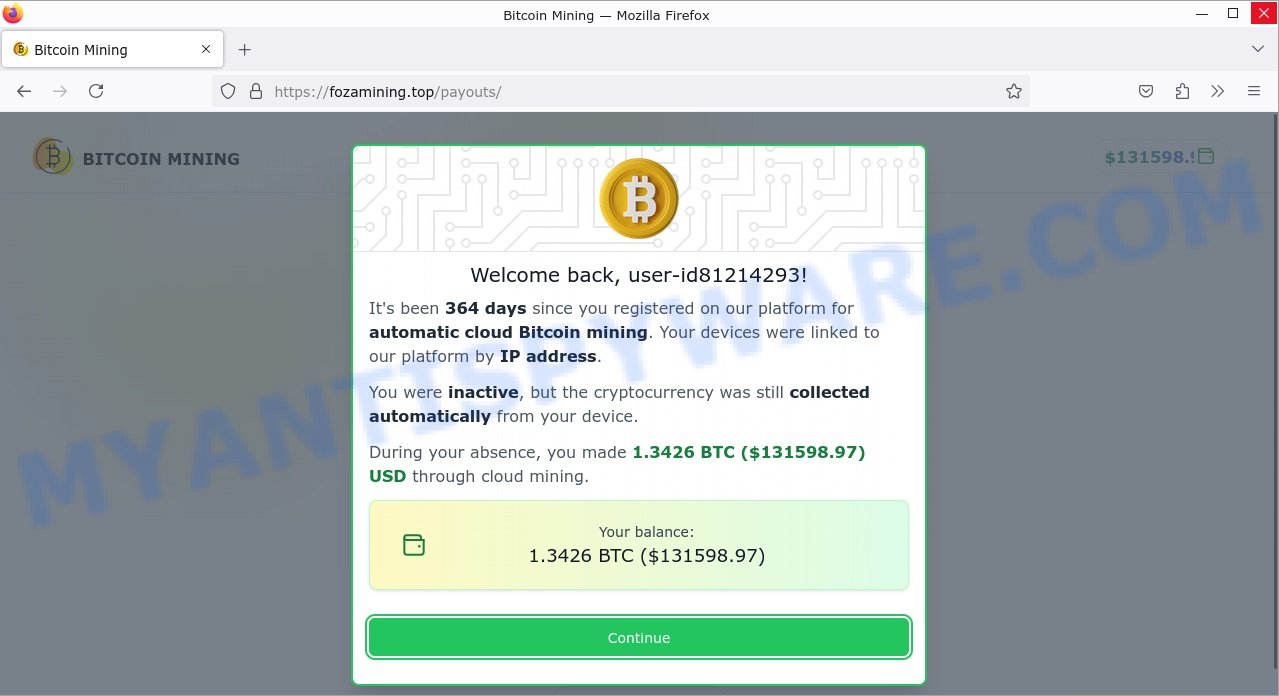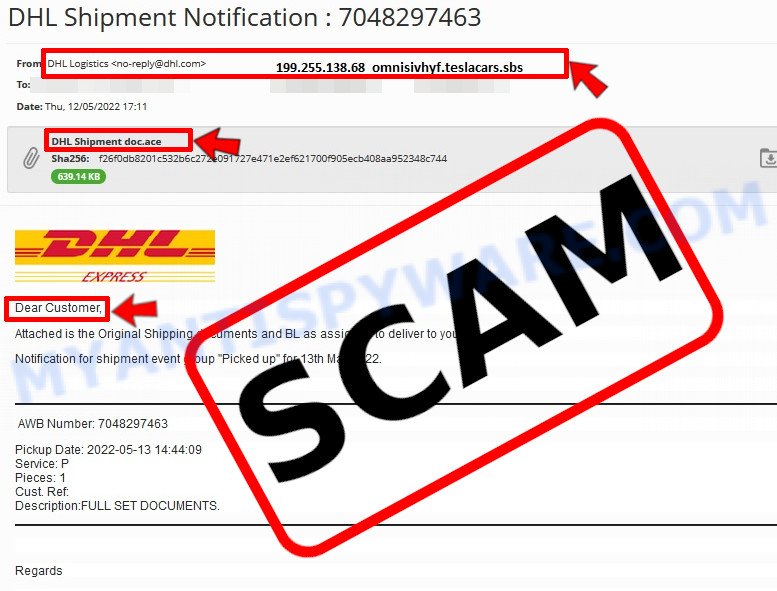The Myantispyware team wants to alert you about a Binance Bitcoin Payout Scam that targets unsuspecting cryptocurrency users. This scam is spread through emails claiming your requested fund transfer via Binance is ready. The email includes a password for accessing the service and attaches a PDF file supposedly from Binance. This is all fake.
Once you click on anything in the email or PDF, it leads you to a website that mimics Binance. Here, you’re addressed as “Dear Customer” and falsely informed that funds were not delivered due to wrong payment details. They then push you to update your payment info to “receive” the Bitcoin.
But really, it’s a phishing site trying to steal your personal info and possibly access your real Binance account. It’s all a trap to grab sensitive details by exploiting your trust in Binance’s reputation.

💡 If you receive such an email, don’t click any links or download attachments. Remove the email immediately and ensure your computer is protected. Follow safe internet practices and use security tools to keep phishing attacks away. Stay aware and keep your personal info safe.
A typical “Binance Bitcoin Payout” scam email reads as follows:
Subject: Your account is currently being verified. We have written out a percentage of profitability of 0.35260 BTC for you today. We ask you to confirm your application. You don’t have much time left. Log in to your account to verify your identity
Your request for funds transfer has been completed. The password for legal access is pass nikolas1718. Enter it on the service. Good luck.
Content of the pdf attached to this scam email:
BINANCE
Emma Davis Financal specialist
Chat Online
Please select one of the payment methods?
BITCOIN WALLET
Dear Customer! The sender of the money transfer in the amount of: 1.349225 BTC (Bitcoin) requested confirmation of receipt of the funds by you as the recipient, so the transfer was changed to demand status.
Your coins are on our service Binance.com, since initially you incorrectly entered your payment details and therefore were unable to receive the transfer.
Binance.com is ready to resume the funds transfer procedure.
To receive a transfer in the amount of: 1,349225 BTC, you need to correctly indicate your payment information to which we will transfer the funds to you and then follow the instructions of the service.
Summary Table
| Name | Binance Bitcoin Payout Scam |
| Type | Email/Phishing Scam |
| Email Subject | Your account is currently being verified. We have written out a percentage of profitability of 0.35260 BTC for you today. |
| Claimed Amount | 1.349225 BTC |
| Phishing Tactic | Fake Binance Chat and Site |
| Phishing Websites | repanem.top, fedmining.top |
📧 What to Do When You Receive the “Binance Bitcoin Payout” Scam Email
We advise everyone who receives this email to follow the simple steps below to protect yourself from potential scams:
- ❌ Do not believe this email.
- 🔒 NEVER share your personal information and login credentials.
- 📎 Do not open unverified email attachments.
- 🚫 If there’s a link in the scam email, do not click it.
- 🔍 Do not enter your login credentials before examining the URL.
- 📣 Report the scam email to the FTC at www.ftc.gov.
If you accidentally click a phishing link or button in the “Binance Bitcoin Payout” Email, suspect that your computer is infected with malware, or simply want to scan your computer for threats, use one of the free malware removal tools. Additionally, consider taking the following steps:
- 🔑 Change your passwords: Update passwords for your email, banking, and other important accounts.
- 🛡️ Enable two-factor authentication (2FA): Add an extra layer of security to your accounts.
- 📞 Contact your financial institutions: Inform them of any suspicious activity.
- 🔄 Monitor your accounts: Keep an eye on your bank statements and credit reports for any unusual activity.
🔍 How to Spot a Phishing Email
Phishing emails often share common characteristics; they are designed to trick victims into clicking on a phishing link or opening a malicious attachment. By recognizing these signs, you can detect phishing emails and prevent identity theft:

💡 Here Are Some Ways to Recognize a Phishing Email
- ✉️ Inconsistencies in Email Addresses: The most obvious way to spot a scam email is by finding inconsistencies in email addresses and domain names. If the email claims to be from a reputable company, like Amazon or PayPal, but is sent from a public email domain such as “gmail.com”, it’s probably a scam.
- 🔠 Misspelled Domain Names: Look carefully for any subtle misspellings in the domain name, such as “arnazon.com” where the “m” is replaced by “rn,” or “paypa1.com,” where the “l” is replaced by “1.” These are common tricks used by scammers.
- 👋 Generic Greetings: If the email starts with a generic “Dear Customer”, “Dear Sir”, or “Dear Madam”, it may not be from your actual shopping site or bank.
- 🔗 Suspicious Links: If you suspect an email may be a scam, do not click on any links. Instead, hover over the link without clicking to see the actual URL in a small popup. This works for both image links and text links.
- 📎 Unexpected Attachments: Email attachments should always be verified before opening. Scan any attachments for viruses, especially if they have unfamiliar extensions or are commonly associated with malware (e.g., .zip, .exe, .scr).
- ⏰ Sense of Urgency: Creating a false sense of urgency is a common tactic in phishing emails. Be wary of emails that claim you must act immediately by calling, opening an attachment, or clicking a link.
- 📝 Spelling and Grammar Errors: Many phishing emails contain spelling mistakes or grammatical errors. Professional companies usually proofread their communications carefully.
- 🔒 Requests for Sensitive Information: Legitimate organizations typically do not ask for sensitive information (like passwords or Social Security numbers) via email.
✅ Conclusion
We hope this article has helped you understand more about the “Binance Bitcoin Payout” Scam Email and how to avoid falling victim to scammers. If you have received a phishing email that is similar but not identical to the example above, please post it in the comments section of this article. This helps us warn other users about potential scams and improve our resources to protect you better. Stay safe and vigilant! 🛡️
















